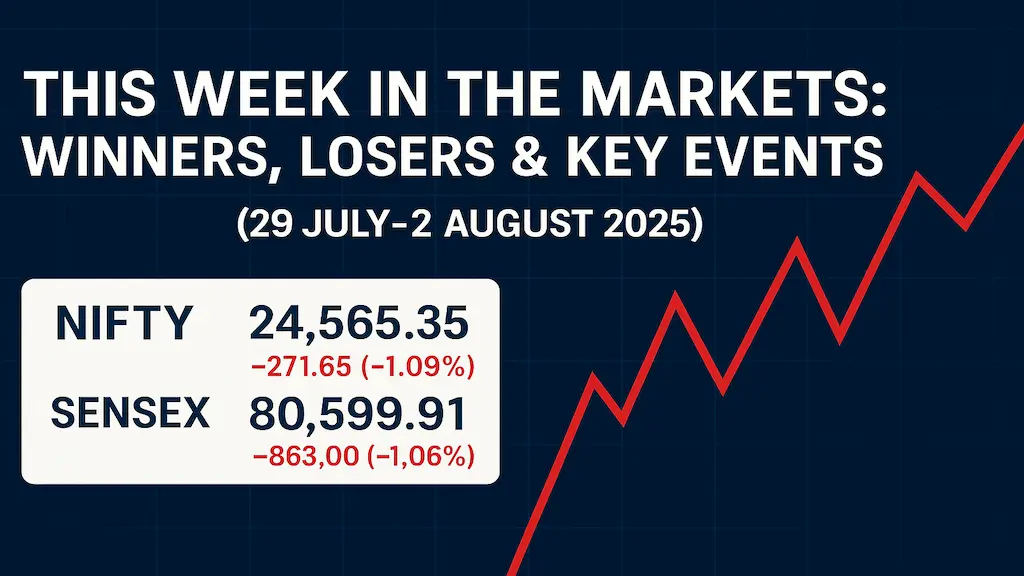Indian stock markets ended lower for the fifth week in a row. Both Sensex and Nifty faced selling pressure as global and domestic factors weighed on investor sentiment.
The Sensex lost around 863 points, closing at 80,599.91. Nifty 50 fell by about 271 points to end at 24,565.35. Mid-cap and small-cap stocks also came under pressure. The mid-cap index dropped by nearly 1.8%, while the small-cap index fell by about 2.5%.
Key Reasons for the Fall
The main trigger for the decline was the new 25% tariff announced by the United States on Indian exports. The move, announced on 1 August by President Donald Trump, created concerns about trade relations and its impact on Indian companies. The U.S. also added penalties related to India’s defense deals and oil imports from Russia.
Foreign institutional investors continued to sell Indian equities. They pulled out close to $2 billion during July. The Indian rupee also weakened by about 1.2% this week to close near ₹87.54 per U.S. dollar.
Global market weakness, a stronger U.S. dollar, and concerns over foreign capital outflows also pressured domestic indices.
(Read also: New FD Rates in 2025 After RBI Cuts)
Top Gainers
Despite the weak overall trend, some stocks performed well.
Larsen & Toubro (L&T) gained around 4% after posting strong Q1 earnings. Hindustan Unilever also rose nearly 4% after an earnings beat and an upgrade by Goldman Sachs. Reliance Industries, HDFC Bank, Asian Paints and Eicher Motors also supported the index in the middle of the week.
Top Losers
Several big names fell sharply.
Dr. Reddy’s Laboratories dropped by about 4% on Friday, underperforming its sector peers. PNB Housing Finance plunged nearly 15% after the sudden resignation of its CEO. Tata Motors slipped around 3.5% as concerns grew over the financial impact of its acquisition plans.
Pharma, small-cap and mid-cap stocks were among the worst-performing segments during the week.
Global Influence
Global events played a big role in market moves. The U.S. Federal Reserve kept interest rates steady but gave a cautious outlook. At the same time, weak job data from the U.S. raised expectations of a rate cut in September.
The U.S. tariff announcement on India and other countries shook investor confidence worldwide. However, Indian markets recovered part of their losses as traders believed the tariffs could be a negotiation tactic rather than a long-term policy shift.
(External Source: Reuters – Indian shares slip as US unleashes steep tariffs)
What to Expect on Monday
Gift Nifty futures hinted at a weak start for Monday. Support levels for Nifty are expected around 24,550–24,600. Resistance is likely at 24,850–24,900. For Sensex, support lies near 80,500–80,600 and resistance at 81,300–81,500.
Investors will watch for updates on U.S. trade policies, foreign investor flows, and any domestic policy actions from the Reserve Bank of India. Corporate earnings from key companies could also influence market sentiment in the coming days.
The market outlook remains cautious. Any news on easing of tariffs or supportive domestic policies could improve sentiment. However, foreign outflows and global uncertainty may continue to keep traders on edge.
(Read more market news on MoneyPhobia Stock Market Updates)


